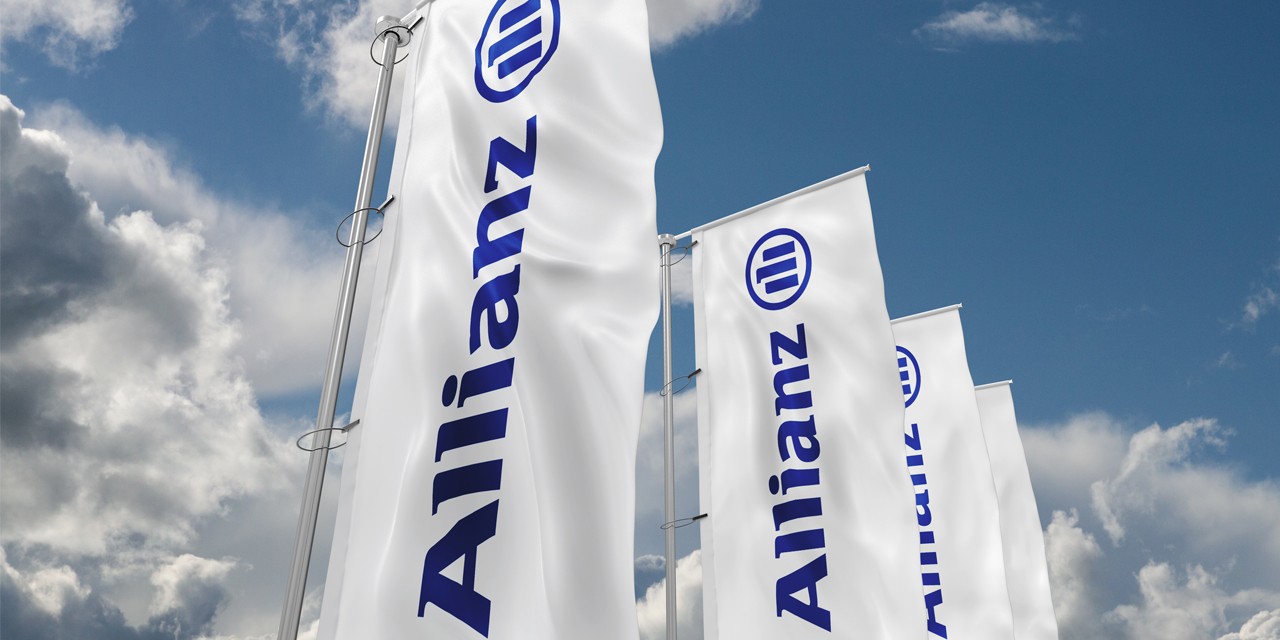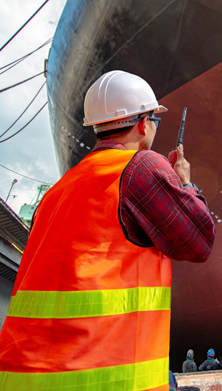Recent incidents in the wake of the conflict in Gaza have demonstrated the increasing vulnerability of global shipping to proxy wars and disputes. Between November 19, 2023, and the beginning of April 2024, there were more than 50 attacks against merchant shipping in the Red Sea by Houthi militants in response to the conflict. We have also seen the first total loss of a vessel, the first fatal attack, as well as signs that the crisis may have spread following the seizure of a container ship by Iranian forces in the Strait of Hormuz, the world’s most important chokepoint for oil shipping. The Houthi military group has also warned it would target any ships heading to Israeli ports if they are within range.
Disruption to shipping has persisted longer than expected and is likely to remain for the foreseeable future, says Captain Rahul Khanna, Global Head of Marine Risk Consulting, Allianz Commercial. “While we have seen sporadic attacks in the past, the conflict in Gaza has opened the flood gates. Even if a political solution is reached, we may see attacks continue as there is clearly now an opportunity for those wishing to disrupt shipping in the Red Sea and beyond. Ultimately, shipping has become a ripe target for those wishing to wage a proxy war. It opens avenues for terrorists or militia groups to get recognition and hit global markets.”
Attacks put crew welfare in the spotlight
One of the biggest concerns resulting from the attacks is the safety and wellbeing of seafarers. Hundreds of crew have been affected in the Red Sea alone, the latest crisis to impact shipping routes in recent years following the Covid-19 pandemic and Ukraine war, both of which left many seafarers stressed and fatigued having spent months at sea.
“Seafarers are on the front line, putting their lives at risk daily,” says Khanna. “The maritime industry is already grappling with a workforce and skills shortage and there is a great concern that the crises of recent years will impact our ability to attract talent at a time when it must meet growing demands from decarbonization and an increasing reliance on technology.”
Drones and cyber: shipping faces worrying threat from new tech
The war in Ukraine and the Red Sea attacks have also revealed the increasing threat to commercial shipping posed by drones, which are relatively cheap and easy to make, and difficult to defend against without a large naval presence.
Houthi militants have used a wide range of weapons and attack methods against shipping in the Red Sea and the neighboring Gulf of Aden, such as anti-ship missiles and large aerial drones, including so-called ‘loitering munitions’ that circle an area before targeting the vessel.
“Warfare is changing, as are the weapons that can cause damage to ships. Such weapons are becoming more precise and can find their way into the hands of non-state actors, such as proxy groups or terrorists,” says Captain Nitin Chopra, Senior Marine Risk Consultant, Allianz Commercial. “Recent events show how even smaller groups could potentially disrupt shipping using drones or explosive devices to target critical trade routes.”
Looking to the future, more technologically driven attacks against shipping and ports are a distinct possibility. Reports of vessels experiencing GPS interference and jamming, which can result in lost or inaccurate signals affecting navigation are increasing, particularly in hotspots such as the Strait of Hormuz, the Mediterranean and the Black Sea. Vessels’ Automatic Identification Systems (AIS) can also be spoofed and are open to cyber-attack.
“The potential to exploit vulnerabilities in cyber security will not have escaped bad actors,” says Chopra. “The blocking of the Suez Canal by the container ship Ever Given in 2021, for example, highlighted the potential to cause widespread disruption to global trade via an attack on a large vessel.”
Rerouting brings supply chain, trade, risk, inflation, and environmental challenges
Attacks against shipping in the Red Sea and Middle East waters, closely following on from the ongoing disruption caused by drought in the Panama Canal, have amounted to a double strike for shipping, causing yet more issues for global supply chains, as well as significantly adding to the distance vessels must sail.
The attacks in the Red Sea have severely impacted Suez Canal transits, while a lack of rain and the El Nino phenomenon contributed to the second driest year in the Panama Canal’s history, also affecting transits. Both routes are critical for the transport of manufactured goods and energy between Asia, Europe, and the US East Coast.
At the start of 2024 transits in the Suez and Panama canals were down by more than 42% and 49% respectively [1], compared to their peaks. Whichever route vessels take, they face lengthy diversions and increased costs. For example, avoiding the Suez Canal adds at least 3,000 nautical miles and 10 days sailing time to each trip, rerouting via the Cape of Good Hope [2].
Businesses that source goods and components from factories in China and South-East Asia have faced delays and higher costs from longer transit times. Some reported rises of 300% for container hire, and logistical delays, adding up to three to four weeks to delivery times, creating cashflow difficulties, and component shortages on production lines.
Such experiences have thrown the shipping industry and the issue of supply chain resilience into the public consciousness, says Khanna.
“Supply chains have been disrupted by a series of events in recent years, from extreme weather and climate incidents, container ship fires and groundings, through to the pandemic and conflicts in Ukraine and the Middle East, not forgetting the recent Baltimore bridge collapse.
“How should the shipping industry and its customers address this challenge? In today’s interconnected environment it is even more important to have a ‘Plan B’ and alternative options. An unexpected event can have a domino effect globally. Shippers around the world should consider diversification of their supply chains and in some cases nearshoring and onshoring might be an option.”
Increased transparency is also part of the solution, particularly when it comes to tracking cargo. While the global risk environment for shipping has changed significantly in recent years, the average shipper still knows very little about the location of their cargo, which makes it very difficult for them to put effective contingency plans in place to minimize disruption. Ultimately businesses will need to update their approach to cargo risk management and business continuity planning, says Régis Broudin, Global Head of Marine Claims, Allianz Commercial.
Rerouting will also require a shift in the shipping industry supply chain, if large numbers of vessels switch to alternative routes around the Cape of Good Hope for a prolonged period. Container lines tend to ply the same established trade routes, but rerouting will require alternative bunkering, supply, repair, and maintenance facilities. The risk environment could be impacted suggests Wayne Steel, Senior Marine Risk Consultant, Allianz Commercial. For example, storms and rough seas could be more challenging for smaller vessels used to plying coastal waters, especially where crews may not be sufficiently trained and equipped for such conditions.
Other areas impacted include container capacity, older vessels being kept in service as longer journeys means an increasing demand for ships, inflation – according to Allianz Trade analysis, a prolonged period of disruption in the Red Sea could cause it to increase by +0.5% – as well as the environment. The disruption in the Red Sea, combined with factors linked to the Panama Canal and the Black Sea in the wake of the Ukraine war, could erode the environmental gains achieved through ‘slow steaming’, as rerouted vessels increase speeds to cover longer distances. The longer distances caused by rerouting container ships from the Suez Canal to the Cape of Good Hope result in an estimated 70% increase [3] in greenhouse gas emissions for a round trip from Singapore to Northern Europe. Shipping diversions from the Red Sea are already cited as being a primary cause of a 14% surge in the carbon emissions of the EU shipping sector [4] during the first two months of 2024.
Somalia piracy threat re-emerges
The past year has seen maritime piracy rise. There were 120 reported incidents against ships in 2023, up on 2022. A big concern is the re-emergence of piracy off the Horn of Africa amid the wider security concerns in the neighboring Red Sea.
In December 2023, the bulk carrier Ruen was hijacked, the first reported successful hijacking by Somali pirates since 2017. Between 2005 and 2011, they seized 149 ships and over 3,700 crew for ransoms totaling more than an estimated US$300mn [5]. A further three vessels were attacked in January 2024, while in March 2023, the bulk carrier Abdullah was hijacked, reportedly only being released after paying a ransom, sparking fears this could encourage further attacks.
“Shipping is vulnerable to extortion and pirates may be emboldened by what is going on in the Red Sea. It could just be opportunistic, but we must be prepared for the prospect that we will see a period of renewed hijackings and piracy attacks at sea,” says Khanna.
Ukraine war: ‘shadow fleet’ risk to vessels and environment
A gradual tightening of international sanctions on Russian oil and gas exports over the past three years since its invasion of Ukraine has resulted in the emergence of a sizable ‘shadow fleet’ of tankers, mostly older vessels that operate outside international regulation and often without proper insurance. This situation presents serious environmental and safety risks in key chokepoints where oil is shipped.
Russia is not the only country to operate a shadow fleet. Iran and Venezuela have used such tankers to circumvent sanctions and maintain oil exports. Estimates put the size of the dark fleet at between 600 [6] to 1,400 [7] vessels, roughly a fifth of the overall global crude oil tanker fleet.
Much of the shadow fleet is likely poorly maintained and may not have undergone appropriate inspections. Shadow tankers also participate in the dangerous practice of ship-to-ship transfers in the open ocean, as well as turning off Automatic Identification System (AIS) transponders to obscure their identity. Vessels have been involved in at least 50 incidents to date, including fires, engine failures, collisions, loss of steerage, and oil spills. The cost of dealing with these incidents often falls on governments or other vessels’ insurers if one is involved in an incident.
“As long as there are sanctions on countries like Russia and Iran, the shadow fleet looks here to stay,” says Justus Heinrich, Global Product Leader Marine Hull, Allianz Commercial. “Given the age of the vessels in the shadow fleet, safety is a big concern. Often these vessels are at the end of their operational lives and are used in a high-risk business.”
Territorial disputes in the South China Sea
The Red Sea crisis shows just how important critical waterways like the Suez Canal are to the world economy, and how vulnerable they can be to disruption. It has also put the spotlight on other parts of the world where shipping routes are exposed to geopolitical events, such as in the South China Sea, where territorial disputes exist. Examples include the Paracel and Spratly Islands, which possess rich natural resources and fishing. Meanwhile, tensions between the US and China remain, particularly over Taiwan.
Over the past decade, China has incrementally built-up military bases in the South China Sea and populated the waters with navy and coast-guard boats. In turn, that’s led to incidents at sea with vessels from other countries who also lay claim to territories, such as the Philippines [8].
“Political rivalries and conflicts are increasingly being played out on the seas and disputes over territories is not an issue that is likely to go away anytime soon,” says Chopra. “Shipping companies should always be prepared for any potential sources of disruption to their operations and supply chains.”
This article is adapted from the latest edition of Allianz Commercial’s annual Safety and Shipping Review, which will be published during May 2024.
References
[2] BBC, Red Sea crisis: What it takes to reroute the world's biggest cargo ships, January 21, 2024
[3] S&P Global Commodity Insights, Suez Canal disruption boosts bunker consumption, emissions: UNCTAD report, February 22, 2024
[4] gCaptain, EU maritime emissions surge amid Red Sea diversions, April 19, 2024
[5] The World Bank, Regional Vice-Presidency for Africa, The Pirates of Somalia: Ending the Threat, Rebuilding a Nation
[6] Trafigura, ‘Shadow Fleet’ of Tankers Hauling Russian Oil Swells to 600 Ships, Trafigura Says, February 3, 2023
[7] Atlantic Council, Russia’s growing dark fleet: Risks for the global maritime order, January 11, 2024
[8] AP News, Philippine and Chinese vessels collide in disputed South China Sea and 4 Filipino crew are injured, March 5, 2024















